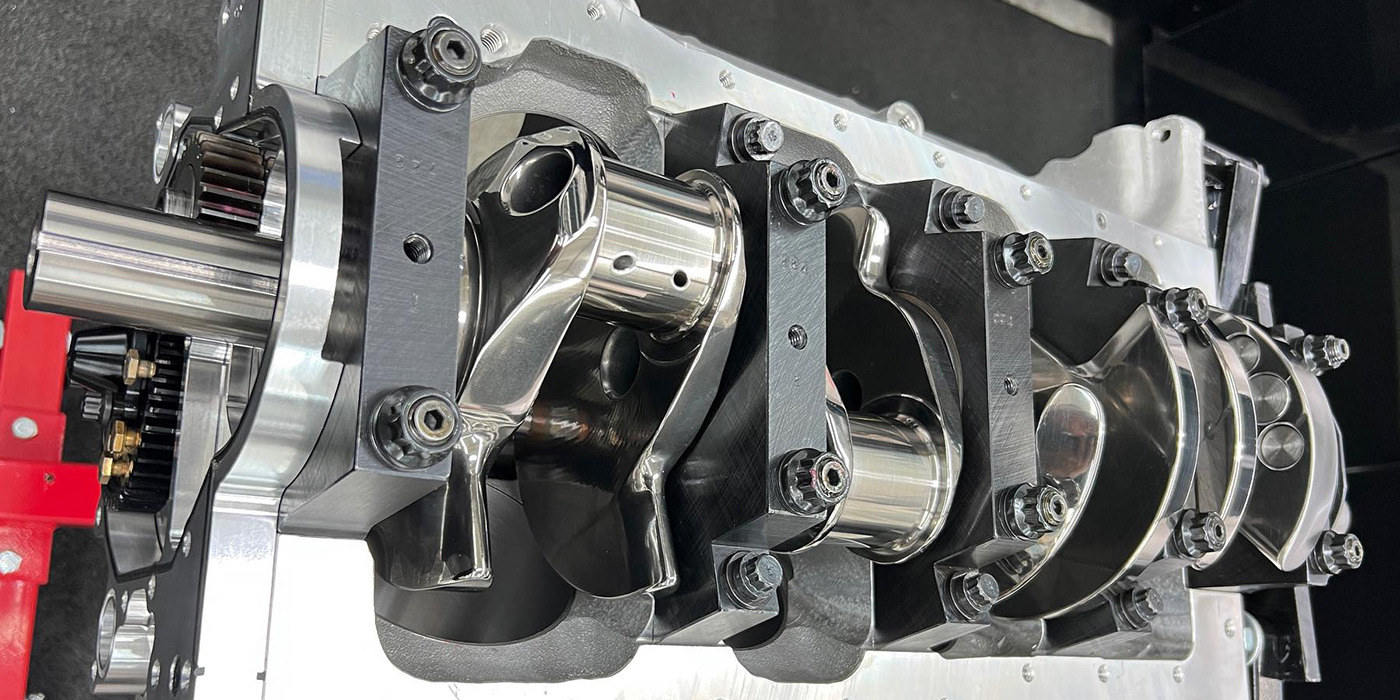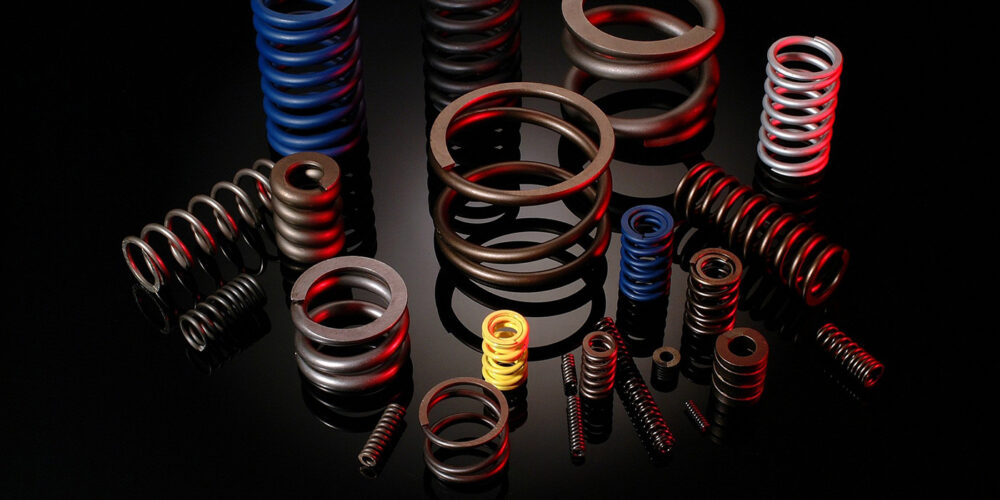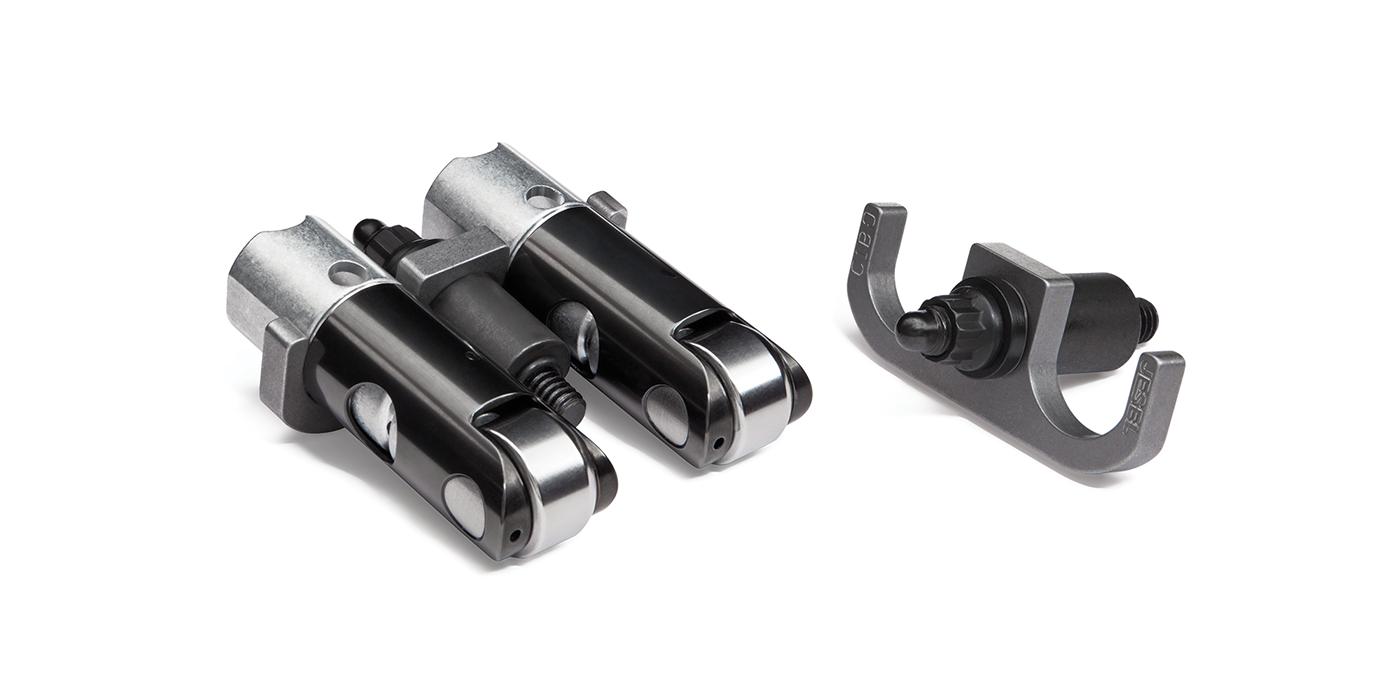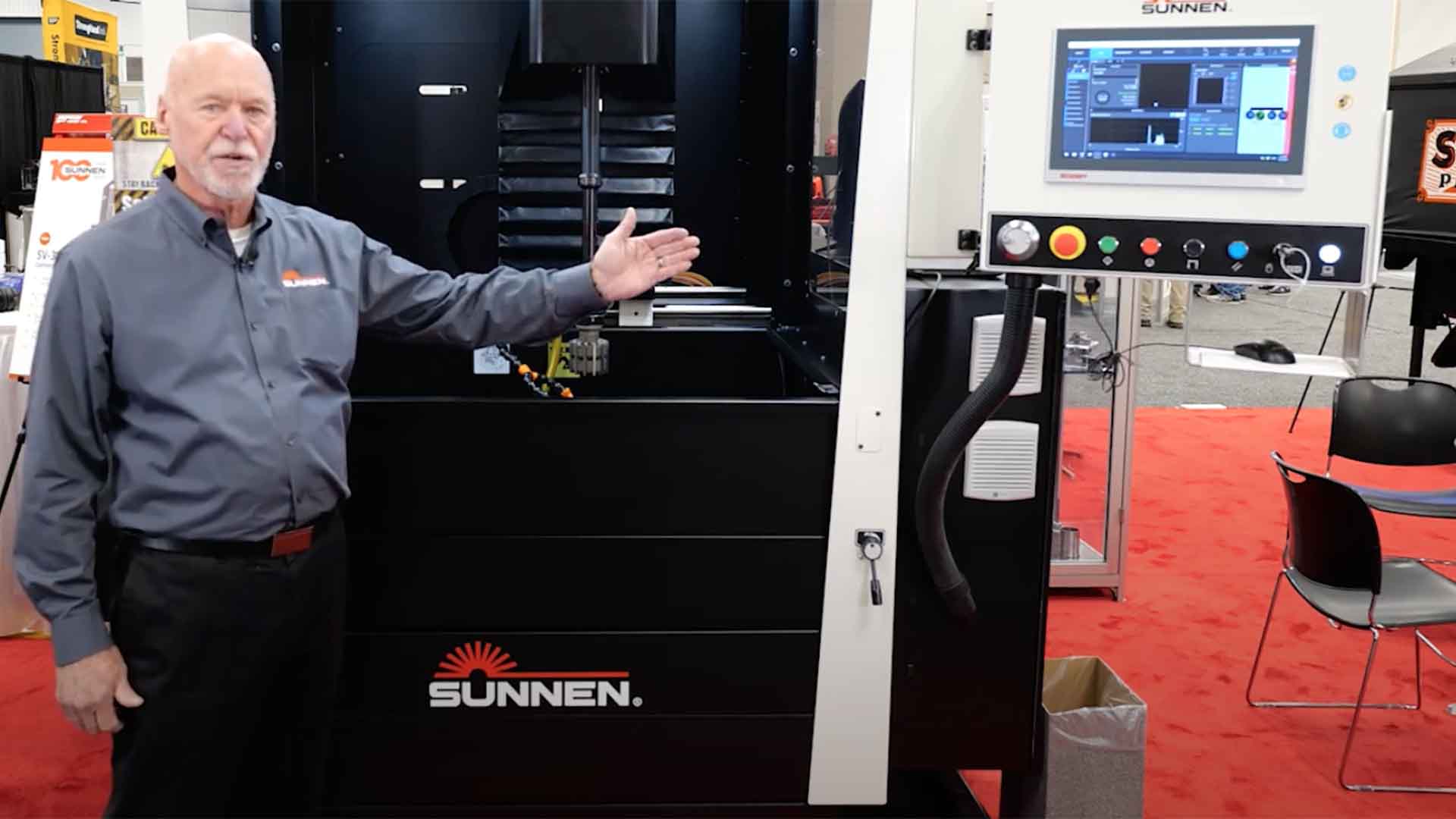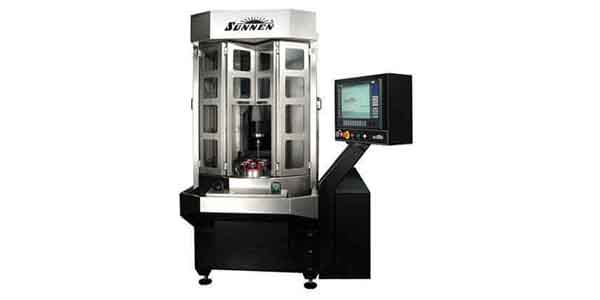When it comes to piston rings, you’ve got a compression ring, which is sealing compression, but you also have an oil control ring. Sometimes, the second ring in a traditional three-ring package is only about 20% compression. Even though it’s called a compression ring, it’s actually 80% oil control.
What’s unique about a piston ring package is not only is it a seal for compression, it’s also controlling and distributing the oil on the cylinder walls of the block. Not only is a ring a seal, it’s also a lubricated component. Proper lubrication in any part, anywhere, is simply described by the four Rs – right oil, right place, right time, and right amount. The right oil means it’s the right viscosity and additive package for the application, and you’ve got to get it in the right place at the right time in the right amount.
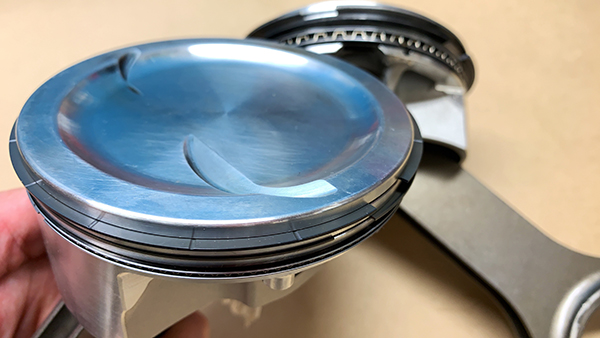
“I’ve really seen that come to light in terms of engines and piston rings, and what I see is there’s a gap,” says Total Seal’s Lake Speed Jr. “There’s a lot of gain to be had in the last three of those four Rs. In the last 15 years, the availability and the options in terms of having the right oil have massively expanded. There’s lots of really good oils out there now. However, that’s only one of the four Rs. It really doesn’t matter how good that oil is if you don’t put it where it’s supposed to be when you need it and enough of it, it doesn’t matter.”
When you think about oil, people tend to think of it as a lubricant, but in terms of the piston ring, it’s actually doing two things. Not only is it lubricating the ring, because it is a lubricated component, but it’s also the seal.
“I like to say oil is the gasket,” Speed says. “There are irregularities and oil is the gasket that fills in those irregularities that creates the seal. The piston ring can conform on a macro level to the bore, but at the micro level, it can’t. The seal is the oil. It’s the gasket between the ring and the ring land and the ring and the cylinder wall. Having enough oil there to be able to be that gasket is important.”
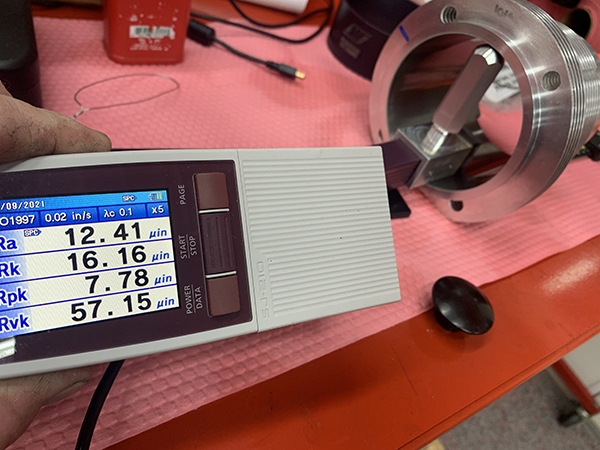
What has also helped the oil and ring relationship is the size of rings today. By going to a 1mm, 1mm, 2mm ring set, it allowed the piston design to change as well.
“In many instances, this allowed for a non-interrupted oil ring groove,” says Mahle’s Joe Maylish. “This change allowed the design to use a ring that is more flexible and improved horsepower and torque because the 1mm, 1mm, 2mm ring sets are more flexible and can adhere to the inconsistencies that may occur in the cylinder wall.”
Joe says it is helpful to think of the piston and rings as a unit that acts as a pump. If that pump can achieve optimal and consistent seal, it will result in optimal performance. That has been achieved by going to a ring design that also offers less potential contact with the cylinder due to less material being used.
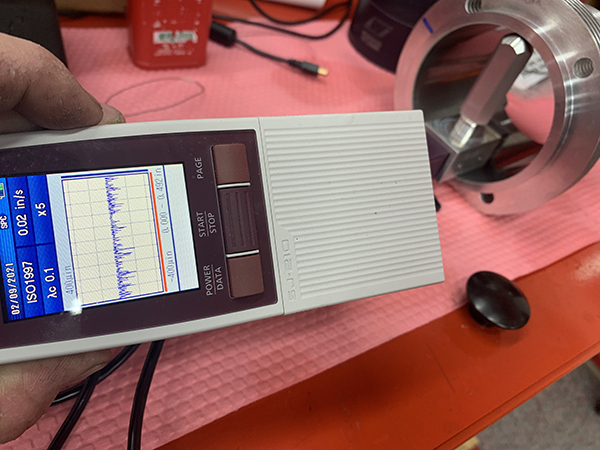
Another thing Lake Speed Jr. has taken note of over the years, is that fuel is the enemy of your oil. One of the requirements in engine oil is to try to deal with the fact that there’s combustion blow by and fuel dilution occurring in the oil.
“When I look at oil samples, the ones that have the most wear are the ones with the most fuel in it nine times out of 10,” Speed says. “The only time you see high wear without high levels of fuel is when there’s a component issue, which is pretty rare. More times than not it’s the fuel that’s killing the oil.”
Fuel has a lower viscosity than oil. The most important characteristic of any lubricant is the viscosity. It’s your primary mode of protection. When you have high fuel dilution, you lower the viscosity and reducing the lubrication characteristics of the oil. That goes back to piston ring issues.
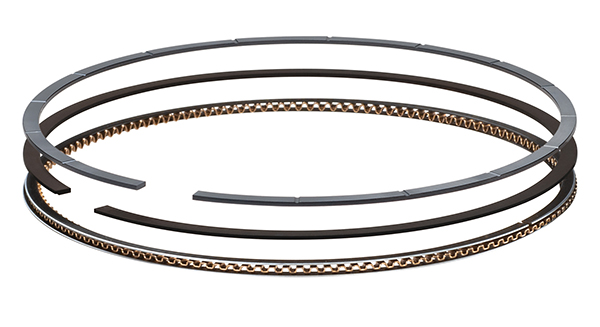
“Today’s rings are steel, because steel is a better material than cast iron,” he says. “It can handle more heat. It’s more malleable. People get the wrong idea that a ring needs to be strong and really stiff. It’s not a structural component of the piston. The wrist pin is – that’s the backbone of the piston and needs to be strong and rigid. The ring is a seal. You wouldn’t put a cast iron gasket between the block and the cylinder head to seal it. No, you put in something soft. It might be a multi-layer steel, but it’s got to have conformability. Seals need conformability.”
By having a steel ring, because it’s got more elastic strength, it can move, it’s more ductile, it can handle the job of a piston ring better than cast iron. The caveat is, when you go to steel rings, you don’t have the porosity that cast iron has.
“That porosity allows it to hold oil, which gets us back to the four Rs – right oil, right place, right time, and right amount,” he says. “That porosity of the old school rings held oil, so you would have the oil to not only be the seal, but also to lubricate the ring. That made it so the hone and the cylinder wall finish didn’t have to be as exact, so guys would have really rough bores.
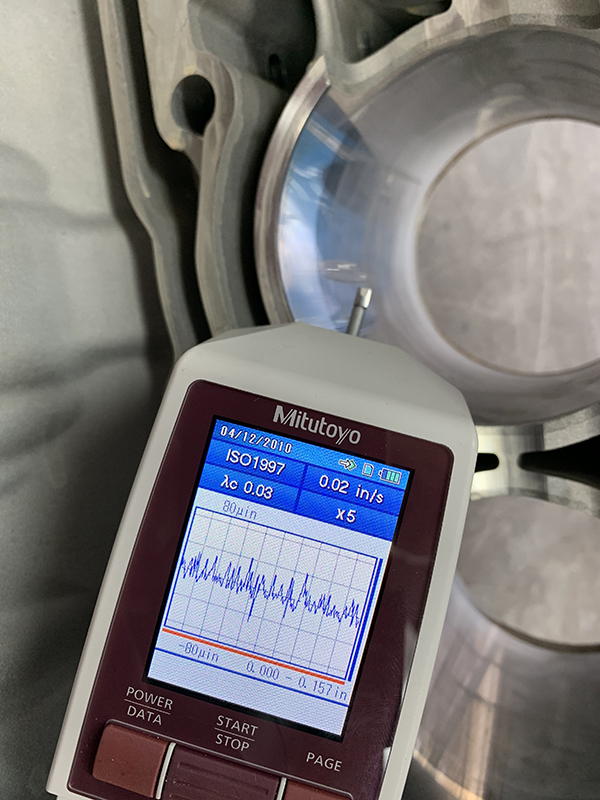
“With chrome rings, because the chrome was hard, it needed that rough surface to bed it in because there’s irregularities of a plated chrome. What did you do to accommodate that? You had a very rough bore finish to abrade that chrome, so it could wear in. That’s why chrome ring engines took forever to break in.”
Going back to the whole idea of right oil, right place, right time, and right amount, those old-school rings had that porosity to do part of the job for you. Surface finish could be off on the hone because it was forgiving. With today’s steel rings, which are a better material and are gas nitrided or PVD coated, there is no oil retention. Now your oil retention has to be in the bore, so now the surface finish of the bore is crucial.
“You have to get into numbers and terms such as Ra, Rpk, Rvk, Rk – you just better get used to those terms because you have to know them,” Speed says. “Ra, as most people do know, is your roughness average. The problem is a peak and a valley in terms of Ra are the exact same thing, except one hurts to sit on and the other is OK. Ra on its own isn’t enough.
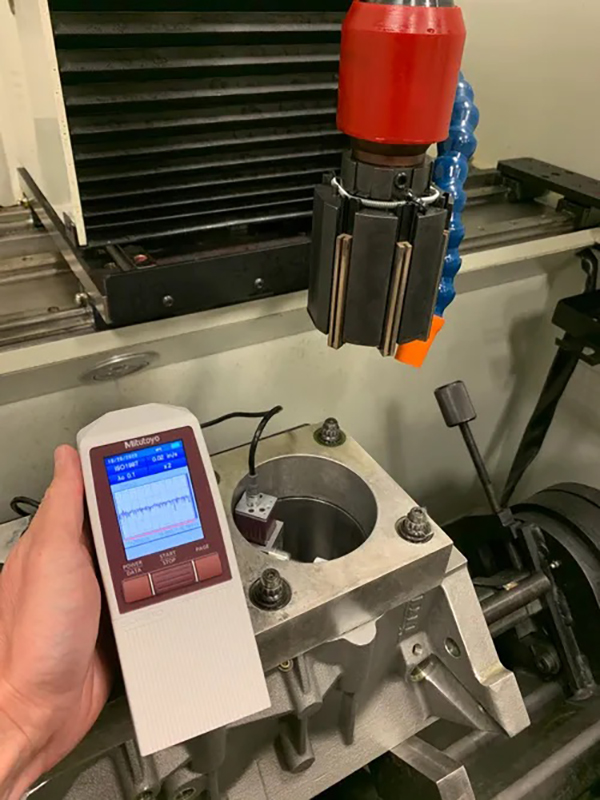
“To make it more complex, in today’s world, we also have many different materials the bores are going to be. In the old days, everybody had gray cast iron. Today, you have gray cast iron, compacted graphite iron (CGI), aluminum, Alusil, etc. All those materials are different from a chemistry standpoint. It only holds to reason that if you take the same abrasive and run the same abrasive at the same load, the same speed, through four different hardness materials and chemically different materials, you’re going to get four different surface finishes.
“That’s the lesson I probably learned the most in the last 12 months was seeing different people having different success and failures with the same products and not understanding what was missing – it was surface finish. That is the difference, and the reason the surface finish wasn’t consistent is the fact that the block material, the bore material itself, varies. There’s a lot of variance, even in hardened sleeves, from one manufacturer to the other.”
Engine builders have to deal with those variables from a gray cast iron block to a high-nickel block to an all-aluminum block that’s cast with sleeves versus a billet one with sleeves. You also have to consider how big those sleeves are. How much have you taken out of the sleeves? Are they very thin? Are they very thick? All of that leads to differences in not just surface finish irregularities, but also bore distortion.
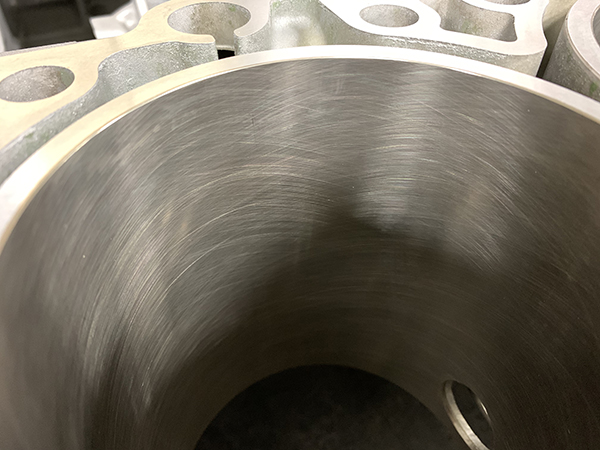
“Those are the challenges we see that makes it fun,” Speed says. “What’s great about an engine is an engine is an ever-complex thing. None of them are the same. The environment they run in is completely different, so there’s no magic answer. We all wish we could just go to Smokey’s book or Grumpy’s book and just turn to page 15 and there’s the answer, just go do it. I wish it was that simple, but it’s not. That’s what makes it fun.”
These different materials have also led piston manufacturers to increase the use of coatings on piston skirts and crowns because they are effective at minimizing component wear.
“A majority of the piston sets we offer have GRAFAL on the skirts, which reduces friction and acts as a cushioning property when the piston and cylinder make contact,” Maylish says. “The phosphate coating actually benefits the pin bores and ring grooves until the oil system of the engine reaches operating pressure. The benefit is it helps prevent galling and microwelding. We live in a time where performance is being pushed and this drives new concepts, designs and ways to protect the piston.”
When it comes to the piston rings Total Seal manufactures, they do so for many different applications, because there’s no one single solution.
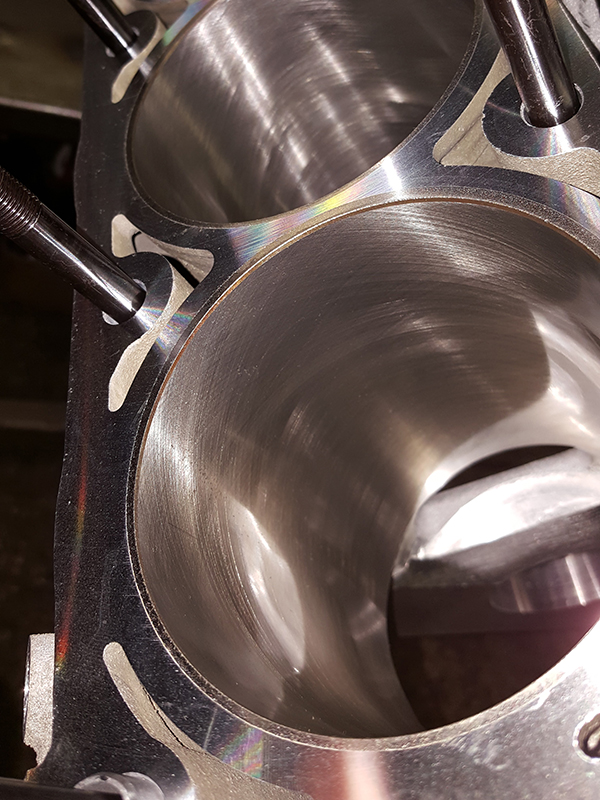
“We have an army or an arsenal of technologies,” Speed says. “There’s not one material, not one coating, not one design. What’s ideal for a turbo diesel engine is going to be different than what’s ideal for your Honda Clone go-kart motor. We begin with the application and then let the application dictate the material, the coating and the design. It’s all about efficiency, and when you need efficiency, that’s when we can help out.”
When it comes to maximizing efficiency, understanding friction, wear and lubrication is critical. In fact, 40% of the friction in an engine is the piston ring rubbing against the cylinder wall. If you’re trying to improve efficiency in an engine, the first thing you should look at is your piston ring package.
“That’s why we’ve gone from 5/64th rings in production engines down to 2.8mm rings in production engines today because of that efficiency,” Speed says.
While no one piston ring style is a perfect fit for all engine applications, Lake does admit there is a lot of promise from the combination of technologies seen in the diamond-finished, gas-ported ring.
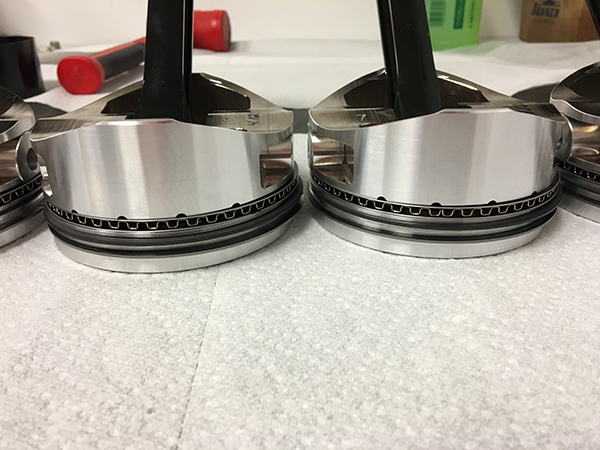
“The diamond finish makes the ring smoother,” he says. “While you need to have that roughness on the cylinder wall to hold the oil, you don’t want roughness on the ring, because if you’re trying to seal two things together there’s going to be blow by. Blow by means less efficiency and more oil contamination – both bad things. A standard production ring is probably going to have an Ra somewhere in the 13-14 range. The diamond-finished rings are going to be down near 2, and certainly less than 6. They’re really smooth. That by itself creates better ring seal just by having a smoother finish.”
Rings in today’s environment don’t seal off of static tension. In the old days, when you had huge rings and low compression, that tension of the ring was enough to make the seal. In a 17:1 compression engine that’s generating over 2,500 psi of cylinder pressure, you can’t seal off of tension.
“What’s doing it is the gas pressure getting behind the ring, which is why guys like Grumpy Jenkins were putting gas ports in pistons to give the gas a shorter path to travel to get behind the ring to dynamically use the ring,” he says. “By putting the gas port in the ring instead of the piston, now you’re not having to put a hole in the piston and you’re getting that real estate back. Now, I can have a gas port near the valve relief pocket and I don’t have to worry about this port being too close to the pocket. I can have an evenly spaced amount of ports in the ring and now that valve pocket can be deeper for more valve lift or whatever it is I need to do.
“In addition, because the detergent additives in motor oil are effective on steel and they’re not as effective on aluminum, I can keep that piston ring clean longer so that gas port doesn’t get dirty and doesn’t lose effectiveness over time. And, because I’ve got them evenly spaced out, I don’t need as much port volume. It’s not wearing the bore out. Plus, the ring is always rotating, so the gas pressure isn’t only aiming in one location. It’s moving around, so it’s wearing the bore evenly and wearing it less.”
According to Lake, engine builders can apply the benefits of gas porting to a wider range of engines than they could before. These rings offer great ring seal, which means more efficiency and they extend the life of the engine. It’s the piston ring technology that has the broadest application. EB





